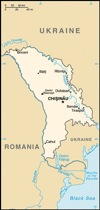by Camilla Azzini
Countries of Origin – Moldova

MOLDOVA
In Moldova the high unemployment rate and poverty constantly impact on the migration phenomenon, increasing the number of people seeking for a job. One-quarter of the economically active population of Moldova is working abroad, and labour is the main reason for migration for 83 per cent of females and 91 per cent of males.
Italy is the second destination country, with 114.900 Moldavian immigrants. Romania instead is the main transition country. The majority of migrants come from district towns or villages, areas with the highest concentration of poor, where migration has been an important poverty coping mechanism.
Main effect of migration is the constantly increasing number of children left without parental care.
177.000 school-age Moldavian children live with one or both parents abroad; 37 per cent have 10-15 years old. In all, 40 per cent of rural children between the ages of 10 and 15 have parents abroad compared with 33 per cent of urban children.
Especially in towns and villages, long parents’ absence has significantly negative effects on the development of children left behind. Moreover, family members who remain in Moldova to take care of children suffer from insufficient number of social workers who help families to gain access to the necessary services. These families are poor and vulnerable without any psychological and social support. Moreover, even though remittances sent by migrants are a positive outcome of migration – remittences amounted to one third of Moldova’s GDP and surpass $ 1 billion mark according to the balance of payments compiled by the National Bank of Moldova – the longer term effects on children left behind are very poor. Without training and planning on how to invest money, remittances have short term effect at family level, only concerning consumes.

